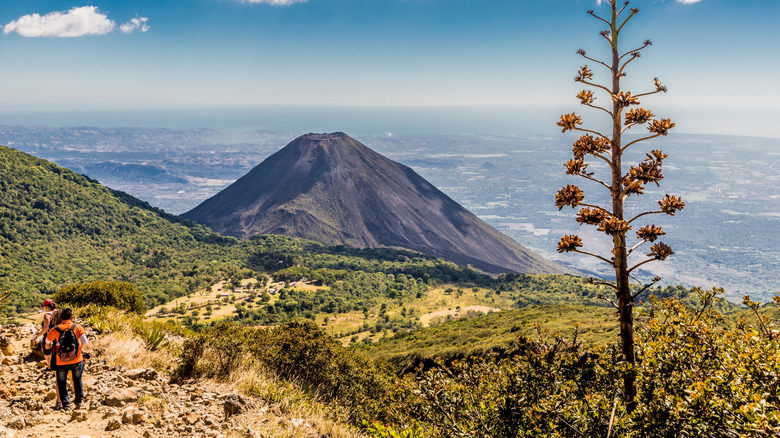El Salvador's Vibrant Crater Lake Is A Shimmering Turquoise Jewel For Ecotourists
As one of Central America's most underrated destinations, El Savador is home to a unique lake that can change its color on a whim. Coatepeque Lake is a popular destination for locals and travelers alike, and ever since 1998, this lake situated in a volcanic caldera, periodically changes its water's color from a clear blue to a jewel-like turquoise hue.
Experts don't really know why this happens, but some believe it's because of some of the algae in the water. What is known is that Lake Coatepeque continues to marvel both Salvatoreans and ecotouristic enthusiasts by unexpectedly changing colors between the months of June and August, making it a must-see destination for anyone traveling in the country.
Coatepeque means "the hill of the snakes" in Nahuatl, and here you can enjoy a variety of water sports and activities like kayaking, jet skiing, diving, or just sailing around in a boat. It's also a great place for hiking through and basking in the scenery of the three volcanoes surrounding the lake: Santa Ana, Izalco, and Cerro Verde. So, if you're looking to spend some time in El Salvador away from big cities, this unique volcanic lake is definitely the place for you.
What to do when visiting the turquoise waters of Lake Coatepeque
Visitors to Coatepeque — one of the many beautiful lakes in Central America — mostly come to see the turquoise waters. However, there are many other things to do around its shores. Throughout the lake's many ports, activities like jet skiing and snorkeling are available to visitors. You can also just take a swim in the clear waters or enjoy a relaxing walk along the caldera's black sands, where you'll be able to reach the several small islands and peninsulas on the lake.
There are also ferries available for tours at the ports, perfect for enjoying the waters without actually getting wet. The ferries are equipped with a bar, so fresh water and other drinks are also available for customers. For those interested in staying on firm land, hiking or biking on the many trails cruising through the lush forests that surround the lake is another possibility.
The trails lead to several overlooks perfect for birdwatching and for taking some selfies and landscape photography if that's more up your alley. And lastly, there are several restaurants along the lake's black sandy shores, where you'll be able to enjoy a delicious meal while looking out at the scenery.
A historic lake, surrounded by nature and Mayan ruins
The "hill of snakes" resulted from an explosive volcanic eruption around 72,000 to 51,000 years ago that created the caldera where Coatepeque now sits. Many of the people that live in the surrounding town of Santa Ana make a living from tourism as well as from agriculture and fishing.
As such, there are many tour operators that offer great one-day experiences that combine a visit to the nearby national park of Cerro Verde with the ancient Mayan ruins in sites like San Andrés or Joya de Cerén, just to end the adventure at the turquoise waters of Coatepeque. You can also hike the Santa Ana Volcano, looming over the lake, for some amazing views.
Hostels around the area welcome travelers that wish to stay at the lake for more than just a day. However, visitors should consider that besides the water and hiking activities, there's not really that much to do here. The lake is actually much more suited for a relaxing rest away from cities and towns like Santa Ana or El Salvador, which is why it is most visited by locals during the weekends. Planning your stay from Monday to Friday is highly recommended for fully enjoying this great destination in Central America while avoiding the crowds.


